TABLE OF CONTENTS
Our guide to growing weed outdoors gives you a detailed rundown of the cannabis cultivation process.
Whether you're planting an open-air or greenhouse garden, growing cannabis outdoors can produce a bountiful yield with flavorful and aromatic flower buds. Want to begin growing weed outdoors?
Here's everything you need to know about growing weed outdoors.
Benefits of Growing Weed Outdoors
Outdoor cannabis has long been compared unfavorably to indoor weed, which is seen as the most potent and flavorful available. Despite this misconception, outdoor-grown weed can boast a fuller spectrum of cannabinoids and terpenes than indoor weed. Plus, there are many more benefits to growing in the great outdoors. Become a master of growing weed outdoors with these steps.
Consider the high energy costs of artificial lights, air conditioning, and dehumidifiers inside an indoor growing space. When growing outdoors, you rely on the natural power of the sun to stimulate root, leaf, and bud growth. All you need is good soil, fertilizer, and seeds.
Indoor growing spaces are usually limited in size. Outdoor spaces, however, give your plants plenty of room to grow roots and plants as tall and wide as they please. Large plants mean a bountiful harvest of up to a pound of weed per plant.
As mentioned above, indoor gardens require high energy costs, which can be wasteful for some people. Outdoor gardens are seen as a more environmentally-friendly approach that doesn’t waste electricity. Instead, the energy is derived from the free sunlight.
Most importantly, outdoor cannabis growing is a fun and relaxing pastime. Gardening, in general, can be a meditative experience that allows you to literally reap the fruits of your labor. What could be better than smoking some of your freshly-cured flower buds?
Step 1: Plan Ahead When Growing Cannabis Outdoors
Growing cannabis plants outdoors has many benefits including reduced energy costs, huge yields, sustainable cultivation practices, and flavorful buds. However, you must plan ahead to get the best results from your outdoor-grown weed.
Here are a few factors to consider before growing weed plants outdoors.
Climate Considerations When Growing Weed Outdoors
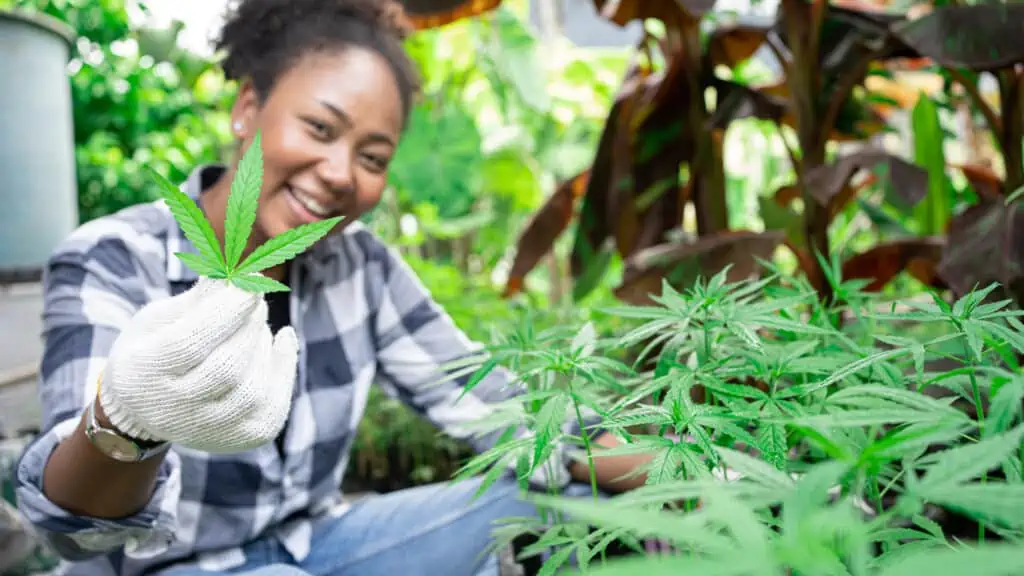
Climate plays a big part in how you plan growing weed outdoors. While cannabis has adapted to grow in nearly every environment, harsh conditions can still cause damage and even lead to death. Ideally, temperatures should be between 75º and 85º F.
Consistent temperatures above 86º F can stall growth, while temperatures below 55º F can cause stunted growth and death.
In terms of environmental stressors, heavy rains and strong winds can wreak havoc on your crop. Furthermore, extremely humid environments can be a breeding ground for moisture and powdery mildew. Also, consider the length of daylight your area gets if you are growing photoperiod strains.
Some areas of the world receive more hours of daylight on the same day.
Choosing a Location and Space For Growing Weed Outdoors
Now, that you’ve decided to continue with your garden aspirations, you must choose the proper growing space. Will your plants be in the ground or in portable containers? Ideally, you’ll want to plant or place your cannabis in areas that receive the most amount of light, especially during mid-day when the sun is in full force.
Consider the privacy and security needs of your garden. Most states with legal cannabis require you to conceal your cannabis garden from neighbors. A tall fence, tree, or other foliage could help seclude your area.
Planting in balconies or rooftops could keep your grow under wraps. In terms of security, a strong cage or fence could keep thieves and pests out.
Finally, ensure your outdoor weed grow is allowed by your local laws and it is secured and not visible or accessible to the public.
Choosing the Right Genetics For Growing Weed Outdoors
Choosing a cannabis strain is one of the most exciting parts of the process. Consider your strain’s unique growing characteristics. Does your strain grow well in your climate and location? Look up strain reviews and tips from growers on which strains prefer which growing conditions.
Furthermore, you’ll have to choose between seeds and clones to grow. Seeds can grow a heartier taproot compared to clones, but you risk ending up with a male or a different phenotype than you’d like.
Clones, which are cuttings from a mother plant during its vegetative state, can be bought from a licensed dispensary. Watch out, though, because clones can inadvertently introduce pests and disease into your garden if you’re not careful.
Autoflowering strains are a good choice for gardeners who want a fast-growing crop or those who want multiple harvests throughout the year. Autoflowering strains begin to bloom automatically after a few weeks instead of waiting for a specific sunlight period. The only downside is that these strains can be less potent. Growing weed outdoors that is potent may work better with strains that are not auto-flowering.
Soil For Growing Weed Outdoors
Soil is a crucial part of the equation that holds the moisture and nutrients necessary for growth. Soil pH is important because extremely high or low levels could restrict nutrient uptake. You can check your own pH and make the necessary amendments to get your plant back on track to a healthy state.
Soil consistency is a major element of the soil’s quality. Cannabis plants thrive in loamy soil, which is soil that consists of sand and silt and some clay.
Too much clay can reduce oxygen levels for roots. Sandy and silty soil offer a good mix of drainage, warmth, and nutrient lockdown. Ensure your soil fertility allows for a healthy and diverse microbiome that helps your cannabis plants grow big and bountiful.
Nutrients For Growing Weed Outdoors
Fertilizer full of nutrients is an essential part of a cannabis plant throughout its life. The three main nutrients a cannabis plant uses are nitrogen, phosphorus, and potassium. Beginners can stick with nutrient solutions made specifically for cannabis.
DIY or pre-made organic fertilizers are made of things like blood meal, bat guano, kelp meal, which is helpful for healthy microbe diversity.
Water For Growing Weed Outdoors
Rain and groundwater can be beneficial to outdoor plants and saves you time and money on watering. Too much of it, however, can be detrimental to the plant.
Check your plants regularly and water them consistently when it gets too hot during the summer. Some large cannabis plants can use up to 10 gallons of water per day.
Ideally, use filtered water to reduce the number of dissolved minerals in your soil. Tap water can contain high levels of these that can affect the soil’s pH level. Water your plants if the top couple of inches is dry. If you have a rainy climate, you’ll need to improve drainage. Try planting in raised beds or diverting the water through ditches. If water retention is a problem, add clay, rocks, or other materials to improve retention.
Step 2: Germination of Weed
If you're starting from seeds, you have to germinate your seeds first. One of the most effective ways to germinate your cannabis seeds is using a moist starter cube/plug and a heat mat. However, one of the easiest ways to germinate your seeds is through the paper towel method using the following:
- Cannabis seeds
- Paper towels
- Two plates
- Water
Find step-by-step instructions on how to germinate seeds using the paper towel method on our blog resource.
Step 3: Vegetative Stage of Weed
Once your seeds have sprouted and cotton their first leaves, this is when the vegetative stage begins. From spring until fall, the vegetative phase uses sunlight and nutrients to grow its roots, leaves, and stems. During this stage, your cannabis plans will need higher levels of nitrogen to fuel their growth.
During this stage, you can experiment with different cannabis training techniques including low-stress and high-stress techniques. In addition, make sure you're closely monitoring your plants water intake.
As it grows bigger, it will need more water. Make sure to water your weed plants away from the stalk to allow your roots to stretch out.
Step 4: Flowering Stage of Weed
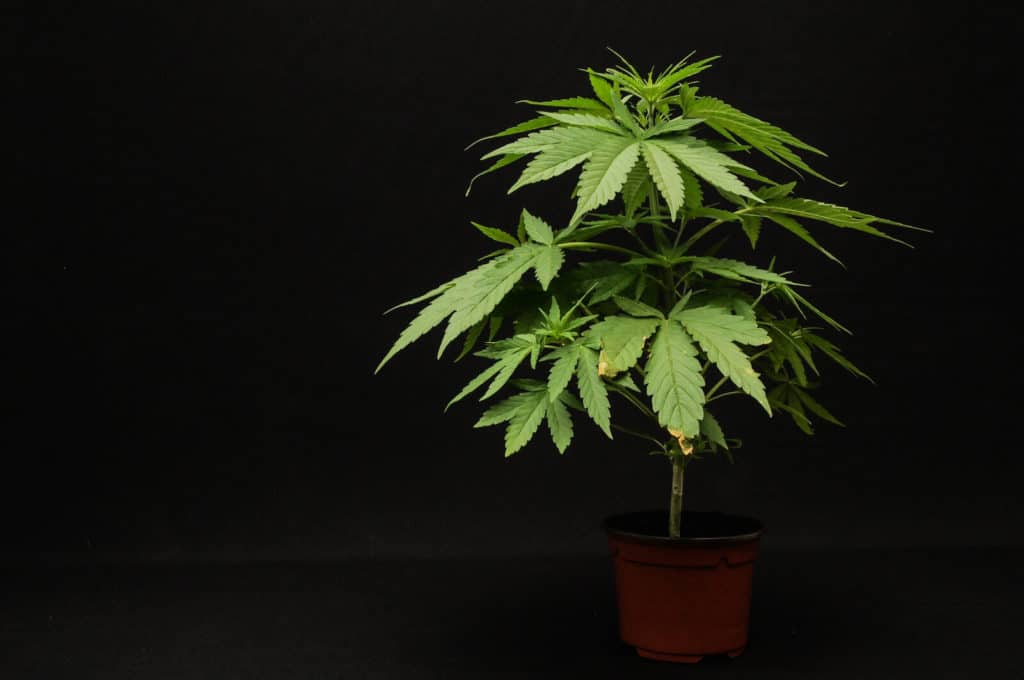
Here's where it gets exciting. The flowering stage is when your plants begin to grow their resinous flower buds that we all know and love. Generally, you'll be growing photoperiod plants which require a 12-12 light schedule of lightness and darkness.
Autoflowering plants don't flower according to a light cycle. Instead, they begin flowering after a certain period of time.
If you're growing from regular cannabis seeds, this is where it gets tricky. Feminized weed seeds are most likely going to yield female flowering plants. During the flowering stage, you've got to keep an eye on your plants grown from regular seeds since there's a possibility that you may end up with a male pollinating plant.
Male plants grow pollen sacs without the tall-tale white hair pistils of female plants. Make sure to remove the male plants immediately to avoid pollinating females and ruining your crop.
Make sure to pay close attention to the status of your flowering plants since they may require fine-tuning with nutrients and pruning due to the focus being spent on the bud growth.
Some cannabis growers choose to flush their crops before harvest. Flushing involves feeding plants only water to remove the nutrients from the plants right before the harvest.
Step 5: Harvest for Weed
After many months of carefully tending to your plants, it's time to harvest your crop. But, how do you know when your buds have reached their peak freshness? Here are some guidelines to consider to perfectly time you are harvest:
- Pay attention to your senses. Your garden should be very pungent and feature bud sites with tons of trichomes that start off as white, hair-like glands.
- Allow about half of the trichomes to darken over time to a golden-yellow color signaling higher cannabinoid levels.
- Allow about two-thirds of the trichomes to darken for a more sedating and anti-anxiety experience due to the THC content converting to the calming CBN.
- If possible, use a magnifying glass or loupe to assess the color and formation of your trichomes.
It takes a bit of trial and error to perfectly time your harvest, especially if you have trouble estimating the color and percentage of trichomes that have changed. Over time, it gets easier. Now, it's time to sanitize your scissors, and start cutting the plant down to begin the final stages.
Step 6: Drying Weed
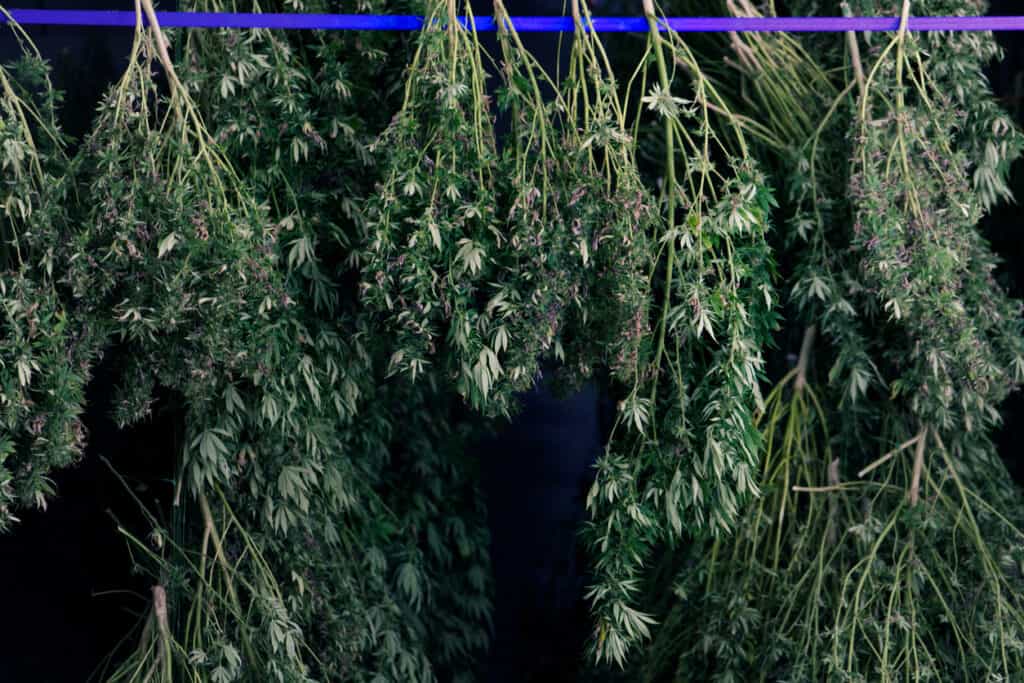
After you cut down your cannabis branches and have trimmed off the excess leaves and foliage from the buds, it's time for the drying stage. Drying takes place in a cool, dry, and dark area.
Growers generally hang the branches (using clothes hangers or similar tools) upside down for them to dry out. An ideal drying environment is about 70º F with 50% humidity.
Drying your buds is a slow process that requires patience. There's no shortcut. Allow your buds to dry until they feel dry to the touch and their small stems produce an audible snap sound when bent. Thicker stems may usually bend slightly. When they’re fully dry, it’s time to move on to the curing stage.
Step 7: Curing Weed
Curing cannabis is a similar concept to drying it, which removes the excess moisture. However, curing takes place in an airtight mason jar in a dark and cool location. Simply fill your mason jar about 3/4 of the way full and allow your buds to sit there for a few weeks.
Every day, open the jar for a few minutes to allow your buds to get fresh air and the moisture to be released. Excess moisture can lead to mold which can ruin your flower.
When your buds start to feel dry when you open them after a week or two, you can open the lid fewer times (about once a week). Curing timelines vary by grower. You will need to experiment to find your preferred curing length.
Step 8: Storage for Weed
Once you've harvested your trichome-laden buds, the work's not done, although it gets much easier from here.
If you're looking to store your flower buds for the long-term and preserve their freshness, consider your storage practices to avoid a reduction in potency, flavor, and aroma. Here are a few tips for the keeping your weed buds fresher for longer:
- Humidity packs: If possible, add a humidity pack into your bud jar. These moisture-balancing packs absorb or release moisture as needed. Humidity packs are available in a range of relative humidity levels between 58% or 62% humidity depending on your environment.
- Airtight containers: Invest in an airtight mason jar or other airtight containers to store your flower. Ideally, stick with glass or ceramic over plastic. Vacuum bags can also work.
- Dark environment: Heat, moisture, oxygen, and lights all can age your weed. Ideally, invest in a container that is opaque or UV protected. Light entering the bud jar can reduce the potency and quality of your buds. In addition, keep your weed storage area dark, as well.
- Cool environment: Keep your weed storage area under 78° F to reduce the risk of mold in your bud jar.
Growing Tall and Big Yielding Cannabis Plants Outdoors
Tall weed plants can produce more flower buds than shorter ones, but this isn't always the case. However, if you want to grow the tallest and biggest weed plants for their huge yield, here are nine tips from our growing experts to keep in mind.
Is Growing Tall Weed Plants Better?
Cannabis plants are dioecious, meaning they grow as male or female marijuana plants, although they can be hermaphroditic (grow male and female flowers). Male marijuana plants produce pollen, while female plants produce flowers that can become pollinated.
In the wild, cannabis plants can grow for one year. Each strain has a different length of the life cycle. Marijuana plants have a flowering stage of at least two months. The plants die when they are fully mature, dropping their seeds on the ground in the fall. These germinated seeds may grow into the new breed of healthy plants in the spring.
When growing indoors, the height of the plant can be limited by the grow lights (light intensity, space between lights and plants, etc.) and indoor ceiling height. Outdoors, plants can reach as tall as possible if they have plenty of light and root space and are out of public view.
In terms of plant height, taller does not necessarily mean better, and shorter doesn't mean worse. Some indica plants may grow short but yield higher than taller sativa plants. Ultimately, plant height depends on your grow space, equipment, marijuana plant genetics, and cultivation practices.
While taller doesn’t always mean bigger yields, you can get more flower buds if you have an optimal grow set-up. If you want to grow tall plants, follow these nine expert tips to increase your plants’ height and maximize their yields.
Tip #1: Plan Early
If you want to have a successful cannabis yield, you need to start your growing planning early before the planting season. Before you put your cannabis seed in the soil, you need to have a rough timeline of your plants’ life cycle of your cannabis plant’s structure.
Ask yourself these questions to develop a strategic cultivation plan:
- How long is the cannabis plant’s germination, seedling, vegetative, and flowering stage?
- What is the best time to plant your outdoor cannabis plants in your region?
- Do you have enough vertical and horizontal space to grow the marijuana plant?
- Do you have all your cultivation supplies needed for all or most of the growing season?
- Is it legal to grow cannabis in your state, and are there any cultivation restrictions?
Tip #2: Grow Sativa Strains
Starting with the right cannabis genetics can help you grow taller plants. We recommend buying cannabis sativa strains, known for their slender and tall structure, at least compared to shorter and bushier indica varieties.
This is not a hard-and-fast rule. Sativa strain growth also depends on the plant’s growing practices and environment. If you want to get larger yields with tall-growing genetics, you need to give your plants the right care and maintenance. Look for tall-growing varieties wherever you purchase cannabis seeds or clones.
Tip #3: Grow Your Weed Plants Outdoors
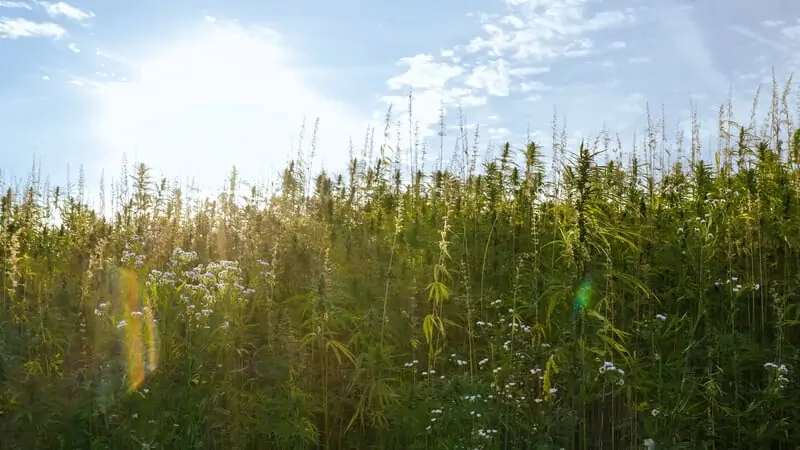
In theory, growing marijuana plants outdoors gives you more vertical space to work with compared to growing indoors with a set ceiling height. In addition, tall-growing plants can get plenty of natural sunlight, nutrient-rich soil, and fresh air they need outdoors to shoot up in size.
Indoor growers can also grow tall plants with the right grow lights, light intensity, and low-stress training. They can also prune lower-yielding bottom buds that don’t get enough light to allow the plant to focus its growth on its higher flowering buds..
Tip #4: Give Roots Room to Grow
It all starts with a healthy and growing root system. Generally, the more room you give your roots to grow, the larger and taller the plant will be. We recommend a large fabric container with living soil. Find out more about choosing the right container size in our blog post.
Some commercial growers use extra-large containers exceeding 200-gallons in size. Growing in fabric pots allows you to move your plants outdoors to get the best light, shade, or protection from environmental threats. Just make sure to keep them out of public view.
Tip #5: Control Pests on Your Cannabis Plants
A pest infestation can happen if you don't regularly check your plants for common pests such as gnats, spider mites, aphids, thrips, and many more marijuana pests. A pest infestation can devastate your crop. Pests can eat your cannabis plant leaves and buds and significantly affect your plants’ health. Explore different pest prevention strategies in our blog post.
Tip #6: Check the pH level
The pH in your soil or nutrient solution can significantly affect the absorption of nutrients and minerals found in the grow medium. If the pH is outside of your plant's optimal pH zone, your marijuana plant can struggle to absorb nutrients, leading to stunted growth, compromised health, and a limited yield.
Tip #7: Extend the Vegetative Stage
Cannabis plants have their seedling stage where they grow just a few leaves, their vegetative stage, where they grow most of their foliage, and their flowering stage where they grow their flower buds.
Many expert growers recommend leaving your marijuana plant longer in its vegetative stage, if possible, to extend its height, which can double during its flowering stage. Just make sure you have enough room in your growing space for the extra size you expect.
Tip #8: Support Your Cannabis Plant
As cannabis plants grow taller and bigger during the flowering stage, their main stalk and branches may be too heavy, not to mention heavy winds or rain that can add more pressure and height. To support your tall weed plants, you may need to practice low-stress training during the flowering stage.
Low-stress training can include screen of green (SCROG) and super-cropping, which involves bending the branches to create an even canopy. Consider bamboo sticks, tomato cages, or metal stakes to support the stalk and branches to support taller plants.
Tip #9: Continue Your Cannabis Education
Giving your cannabis plants the proper care and maintenance throughout their life cycle can provide them the best chance of growing big and tall. Enroll in Cannabis Training University’s online marijuana school to learn more on growing marijuana plants indoors and outdoors from the world's top growers.
Outdoor Grow Hole Size For Growing Cannabis
grow hole size and soil mix. How big should your outdoor grow hole be? Is digging a bigger grow hole better? Our outdoor grow hole size guide shows you what factors to consider before digging your grow hole.
What is the Ideal Outdoor Grow Hole Size?
An outdoor grow hole size depends on the size of the plant, pot, and root ball. In the beginning, outdoor marijuana growers may start their plants indoors to give their tender plants a fighting chance at growing strong and healthy. Once your cannabis plants have grown enough to handle the outdoor environment.
Grow hole sizes can depend on the variety of cannabis plants you intend to grow. Small cannabis plants like autoflowering strains may not need as big a hole as larger sativa plants. Ultimately, you want to have enough room in your hole for roots to thrive.
Is a Bigger Grow Hole Better?
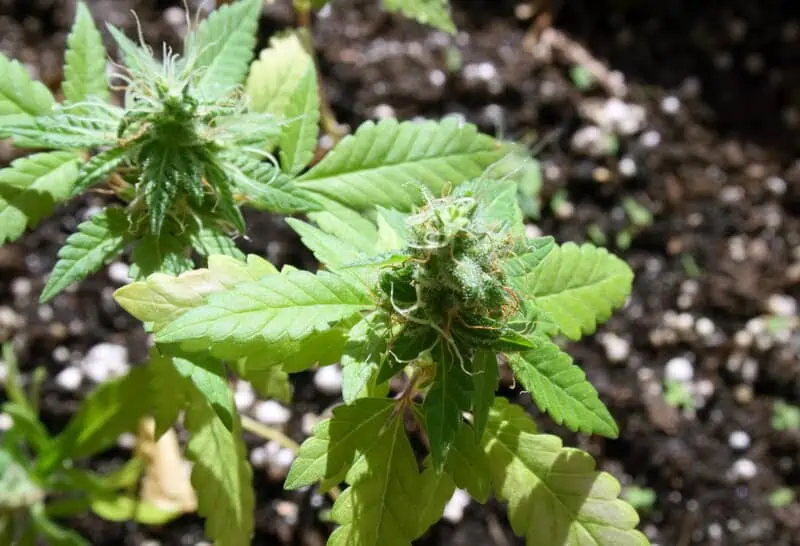
Generally, the bigger you dig your hole, the bigger your cannabis plants will grow outdoors. Essentially, larger holes or containers give the plant’s roots a lot of space to thrive. Some outdoor growers use 10-12 gallon containers, although bigger holes/containers may require investing in more soil mix.
Digging the hole too small with compacted sides can contain root growth and lead to a root-bound plant. Signs of a root-bound plant include wilting, spotty, and yellowing leaves. Ideally, you’d dig a hole about 2-3 times the diameter of the plant’s root ball.
Go for Shallow and Wide Grow Holes
For the most part, cannabis roots will grow about 12 inches and, in some cases, 24 inches deep. The roots of clones may grow even shallower since clones do not have a tap root like plants grown from seeds. While the roots grow down, they also grow wide.
Digging shallow and wide grow holes is the best for your outdoor plants. Cannabis roots rarely grow deeper than 18 inches. Digging your hole very deep may increase your time and labor without seeing improved results than if you dug a shallow and wide grow hole, about 2’x2’x2’ should be ideal for your outdoor cannabis plants.
How to Dig a Big Grow Hole
Digging a hole sounds like a piece of cake, right? While digging a grow hole may sound easy, there are a few factors to consider, including hole size and spacing between holes. An essential aspect of digging a hole for planting is finding the right digging tool.
A large shovel or spade is one of the best digging tools for digging a large and deep hole. If you plan to grow several marijuana plants, determine the spacing between plants. Spacing depends on the size of the mature plants. Larger plants may need several feet of space.
Be sure to avoid putting in plants with compacted grow hole sides. These can constrain roots similar to plants grown in a pot. Remove the compacted soil on the sides using a small garden space or trowel from the bottom up. Insert the spade and gently pry outward to remove small clumps of soil on the sides.
Adding a Soil Mix to Your Outdoor Grow Hole
Once you’ve dug a hole deep enough for your outdoor marijuana plants, it’s time to fill it up with good soil mix. Organic soil with lots of compost and organic matter can provide a good soil structure and microbiome that help your plant get the proper nutrients.
“
There are over 300,000 jobs in the cannabis industry. CTU trained me for one of them!

Makes $24.50 @ THC +
Creating your own soil mixture instead of using your native soil can improve your soil’s drainage and porosity to give roots the air they need. Head to your local garden store to find pre-made soil or build your own soil with ingredients such as worm castings, peat moss, blood meal, bat guano, kelp meal, and other soil amendments.
What is the best temp for growing weed outdoors?
For seedlings and clones, 77°F is the optimal temperature, followed by 85°F for vegging and 80°F for blooming. While certain variations are permissible, maintaining the atmosphere as closely as possible to perfection guarantees an abundance of sticky buds. Cannabis thrives in temperate climates and withers and dies in extremes of heat or cold.
What strains are good to grow outdoors?
Although many cannabis strains can be cultivated outdoors successfully, some strains are more suitable than others because of their hardiness, resistance to pests and mold, and capacity to adapt to different climatic conditions. Here are some well-known varieties that are effective in outdoor settings:
Aurora Borealis is resilient and resistance to mold and illnesses of Northern Lights, a traditional indica strain, are lauded. Additionally, the strain has a relatively quick flowering time, which is advantageous for farmers in regions with limited growing seasons.
Durban Poison is a South African-bred pure sativa that is well-known for thriving in a range of outdoor environments. It takes a while for it to flower, but the wait is worthwhile.
Amnesia Haze is extremely adaptable thanks to its robust genetics. It is a popular due to its strong yield and euphoric effect.
Guerrilla's Gusto was developed for outdoor growing in colder climates, this indica strain is tough, durable, and able to withstand harsher conditions and lower temperatures.
Purple Maroc strain is especially suited to dry climates and was developed primarily for outdoor cultivation. For a sativa, it flowers relatively quickly.
Frisian Dew is renowned for its stunning purple buds and capacity to thrive in milder areas.
Mango strain thrives in warm and slightly cooler climes and is pest-resistant. For a sativa, it flowers more quickly.
How much light do outdoor cannabis plants need?
Cannabis plants that are grown outside need at least eight hours of bright sunlight every day. The amount of sunshine they get has a direct effect on how many flowers they make.
How should I choose a location for outdoor cannabis growing?
Choose a spot that has enough room, gets a lot of sun, lets air flow well, and is protected from strong winds.
What is the right soil for outdoor cannabis growing?
For growing plants outside, you need soil that has a lot of organic matter and drains well. You can work with sandy or clay grounds as long as you make the right changes, but silty soil is best for growing cannabis outside.
When is the best time to start growing marijuana outdoors?
First, make sure it's between 65 and 85 degrees Fahrenheit. Then, put your cannabis seeds in May, and you should be able to harvest them in September or October.
What is the ideal size for an outdoor grow hole for cannabis?
The hole size depends on the plant's predicted size and soil quality. Recommended hole dimensions are 2 feet wide, 2 feet long, and 2 feet deep. This size gives roots room to grow and acquire nutrients.
Does the depth of the grow hole affect the cannabis plant's growth?
Yes, hole depth matters. A deeper hole provides for better root extension, making the plant healthier and stronger. If the hole is excessively deep, it may take longer and cost more without benefit.
Should I amend the soil in the grow hole?
Grow hole soil amendment is generally advantageous. Compost, worm castings, and a balanced nutrient mix promote soil fertility, structure, and water retention.
How does the grow hole size vary for different cannabis strains?
Your cannabis strain may require a different grow hole size. Smaller strains may thrive in standard-sized holes, but larger strains may need larger holes to accommodate their extensive root systems.
What are the best practices for preparing a grow hole for cannabis?
To prepare a grow hole, remove rocks and debris, loosen the soil at the bottom and sides, and thoroughly mix in soil amendments. Make sure the hole has good sunshine and isn't waterlogged.
Is the location of the grow hole important when planting weed?
Yes. The position should have 6-8 hours of sunshine, protection from strong winds, and good soil drainage. Privacy and security depend on local laws and personal taste.

Luis Cordova
Luis Cordova is a distinguished author, and renowned expert in cannabis cultivation, who possesses a Master's degree in Plant Biotechnology and Pharmaceutical Science. As a valued contributor to highly esteemed publications such as Cannabis Training University and Maximum Yield Magazine, Luis has emerged as a trusted source of guidance and knowledge in the cannabis industry. Having written thousands of informative articles, Luis is widely recognized for his comprehensive expertise on cultivating cannabis, both indoors and outdoors.


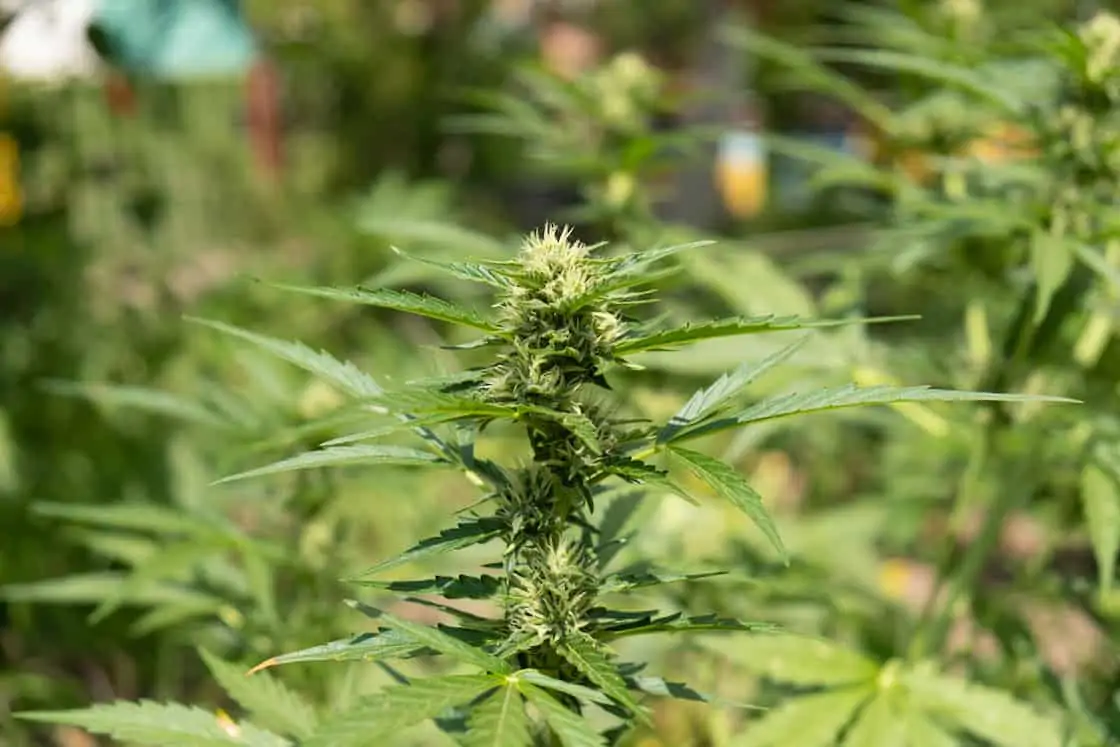






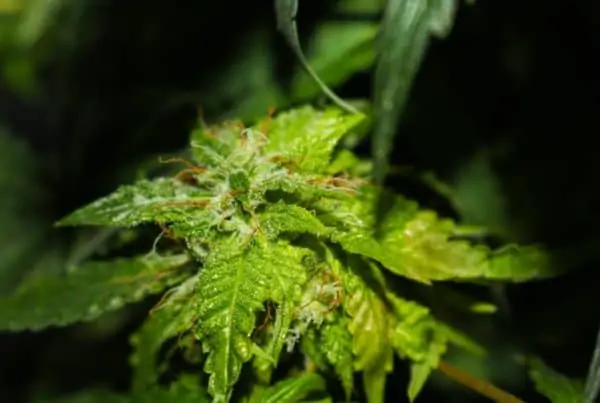
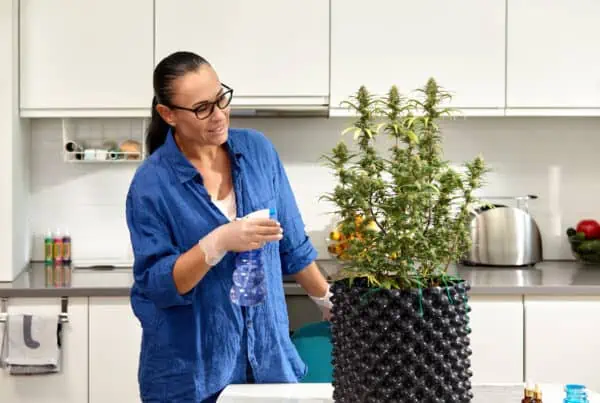

 Jeff was involved in an accident where he endured a traumatic brain injury. He had a week-long stay in ICU where brain surgeons
Jeff was involved in an accident where he endured a traumatic brain injury. He had a week-long stay in ICU where brain surgeons  100% risk free money back guarantee within 48 hours after purchase if student has not completed any of the courses or exams.
100% risk free money back guarantee within 48 hours after purchase if student has not completed any of the courses or exams.